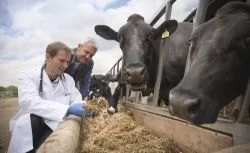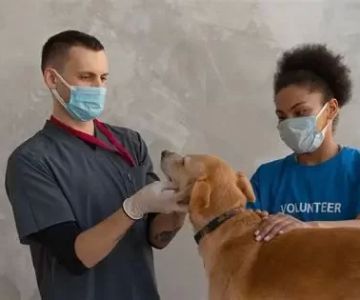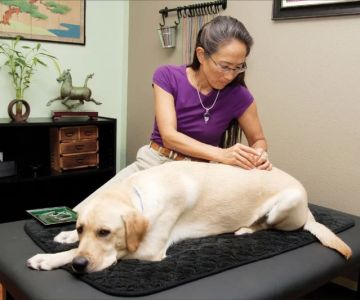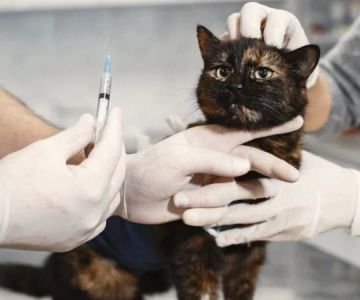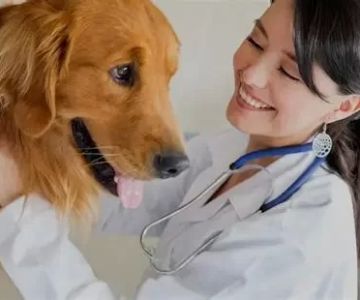How Much Does a Large Animal Veterinarian Make in the U.S.?
- what-defines-a-large-animal-veterinarian - What Defines a Large Animal Veterinarian?
- average-salary-figures-in-2025 - Average Salary Figures in 2025
- factors-that-impact-a-large-animal-vets-income - Factors That Impact a Large Animal Vet's Income
- real-world-story-working-as-a-large-animal-vet - Real-World Story: Working as a Large Animal Vet
- how-the-role-differs-from-small-animal-vets - How the Role Differs from Small Animal Vets
- is-this-career-worth-it-financially - Is This Career Worth It Financially?
- how-to-maximize-earning-potential - How to Maximize Earning Potential
What Defines a Large Animal Veterinarian?
1. Serving Farms, Ranches, and Livestock Industries
A large animal veterinarian is a medical professional who works primarily with livestock—horses, cattle, pigs, goats, sheep, and sometimes exotic hoofstock. They typically operate in rural or agricultural regions, offering services such as health exams, reproductive care, emergency surgery, and disease prevention.
2. Different Environment, Different Demands
Unlike small animal vets who often work in clinics, large animal veterinarians travel between farms and barns. Their job demands physical stamina, environmental adaptability, and, often, a flexible schedule that can include late-night emergency calls.
Average Salary Figures in 2025
1. National Median for Large Animal Veterinarians
As of 2025, the average salary for a large animal veterinarian in the U.S. ranges between $85,000 and $120,000 per year, depending on experience, location, and practice type. Entry-level salaries typically begin around $75,000, while seasoned professionals in high-demand rural areas or large-scale practices can exceed $140,000.
2. Comparing with Other Veterinary Fields
Those wondering how much does a large animal veterinarian make might also be curious how it stacks up against small animal vets. On average, large animal vets make slightly more due to the physical demands and emergency availability often required—but not always. Urban-based companion animal vets with specialized training may earn comparable or higher wages.
Factors That Impact a Large Animal Vet's Income
1. Geographic Location
Rural areas tend to pay higher due to demand and fewer local practitioners. Vets working in states like Texas, Nebraska, or Montana often have broader caseloads and higher base salaries.
2. Emergency and On-Call Services
Offering 24/7 availability significantly increases income potential. Many large animal practices charge premium rates for nighttime emergencies or high-risk procedures.
3. Experience and Reputation
Veterinarians with over 10 years of fieldwork or established reputations with local farms often build loyal client bases. This leads to steadier income and, in many cases, consulting or mentorship roles.
Real-World Story: Working as a Large Animal Vet
1. Meet Dr. Amanda Wells
Dr. Amanda Wells, now in her twelfth year practicing as a large animal veterinarian in Colorado, didn’t choose this path for the money—but she’s built a successful life doing what she loves. Her income? Around $115,000 annually, with additional seasonal income from foaling services.
2. "More Than a Job—It’s a Lifestyle"
Amanda describes her work as a blend of medicine, agriculture, and trust-building. “One night I’m helping a cow deliver twins, and the next day I’m consulting with a rancher on herd nutrition. It’s dynamic—and yes, financially stable when you build your relationships right.”
How the Role Differs from Small Animal Vets
1. Physical Demands and Environmental Factors
Large animal vets must work in barns, fields, and unpredictable conditions. Restraining a 1,200-pound cow is not the same as examining a housecat. This physical aspect can make the job more challenging—and justify a higher salary.
2. Broader Scope of Services
From herd health management to food safety protocols, the responsibilities of large animal veterinarians extend beyond individual care, often involving public health and regulatory knowledge as well.
Is This Career Worth It Financially?
1. High Investment, Moderate Return
Veterinary school debt can be steep—often surpassing $200,000. While the answer to how much does a large animal veterinarian make is encouraging, it's important to note that financial payoff often grows with time, specialization, and smart practice management.
2. Emotional and Community Value
Beyond dollars, many vets find deep satisfaction in supporting food supply chains, treating animals that feed millions, and being integral to rural communities. For the right person, it’s priceless.
How to Maximize Earning Potential
1. Offer Niche Services
Specializing in equine reproduction, embryo transfer, or herd analytics can separate a veterinarian from the competition and open new income streams.
2. Leverage Technology
Using mobile diagnostic equipment and digital scheduling tools can streamline efficiency and increase billable hours. At Hidden Brook Veterinary, we integrate tech and rural expertise to deliver modern care—and maximize outcomes for both vets and clients.
3. Build Long-Term Client Relationships
The best marketing is word-of-mouth. Serving your farming community with reliability and empathy builds trust—and repeat business. For new and aspiring veterinarians, establishing that connection is often the difference between surviving and thriving.
Ready to Learn More or Get Equipped?
Now that you know how much a large animal veterinarian makes and what influences their earning potential, why not explore how to begin or grow in this field? Whether you’re looking for equipment, training tools, or expert guidance, Hidden Brook Veterinary is here to support you—because great veterinarians deserve great resources.

